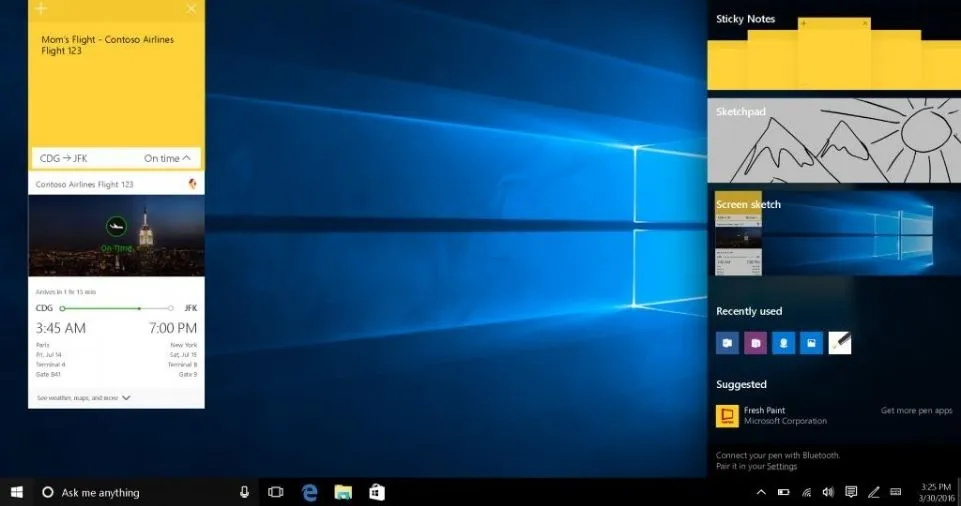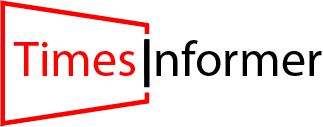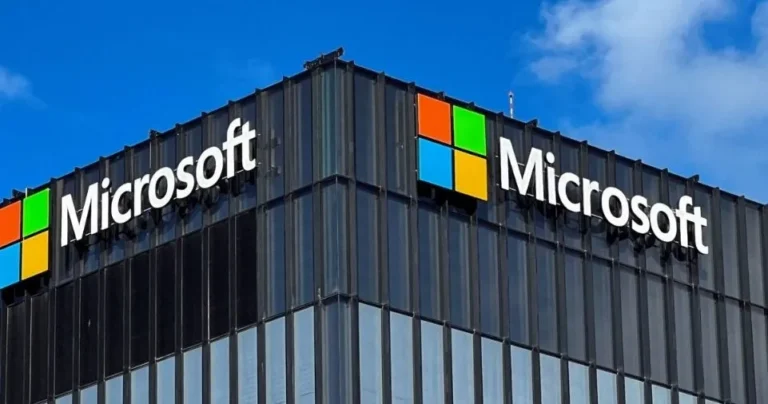In today’s digital world, where technology constantly evolves to meet the needs of users, Microsoft Windows Ink stands out as a unique tool designed to enhance both creativity and productivity.
Whether you’re an artist, designer, educator, or professional, Windows Ink provides a seamless way to interact with your devices through digital pen and touch gestures.
By integrating natural handwriting and drawing into your daily workflow, this feature is revolutionizing how we approach tasks—bringing more precision, flexibility, and creativity to everything we do.
This comprehensive guide will explore the full potential of Windows Ink, focusing on its key features, real-world applications, and future potential.
You will discover how this powerful tool can improve your productivity and unleash your creativity across various industries, from business to education and art.
What Is Windows Ink?
Windows Ink is a feature integrated into Windows 10 and Windows 11 that allows users to write, draw, and annotate on their devices using a stylus or touch gestures.
Whether you’re sketching ideas, making quick notes, or editing documents, Windows Ink creates a more natural and intuitive way to interact with your computer or tablet.
It’s especially useful for those who want to move away from the traditional keyboard and mouse setup, offering a more fluid experience when performing tasks like writing, editing, or designing.
With its versatility, Windows Ink is reshaping the digital workspace and enhancing how users engage with their devices.
Key Features of Windows Ink

Digital Pen and Touch Gesture Support
At the heart of Windows Ink is its ability to work with both digital pens and finger gestures.
This feature is ideal for users who need the precision of a stylus or want the convenience of touch-based input.
Whether you’re drawing intricate designs or marking up a document, the system responds intuitively to different levels of pressure, offering fine control over what you create.
Real-Life Example
If you’re an illustrator using a Microsoft Surface, the pressure sensitivity and tilt recognition of a digital pen mimic traditional art tools like pencils or brushes.
This provides a more authentic drawing experience, allowing you to create nuanced shading or detailed lines in your artwork.
Sticky Notes for Quick Reminders
Remember the physical sticky notes you used to put on your desk or computer screen?
Windows Ink offers a digital equivalent called Sticky Notes, allowing you to jot down quick reminders, task lists, or ideas without interrupting your workflow.
These digital notes are synced across your Windows devices, ensuring that your to-do lists and important memos are always within reach.
Practical Tip
Use Sticky Notes for daily task management. You can quickly write down reminders during a meeting or brainstorm session, and they’ll be available on your desktop or tablet, making it easier to keep track of your schedule.
Screen Sketch: Annotate and Edit Screenshots
One of Windows Ink’s most practical features is Screen Sketch, which lets you capture your screen and annotate it directly.
You can draw attention to specific areas, make notes, or highlight important elements within a document or image.
This is especially useful for professionals who need to give visual feedback on design projects, presentations, or reports.
Example for Collaboration
In a design review, you can take a screenshot of a website layout and use the stylus to circle areas that need revision, add comments, and share it with your team.
This feature reduces the time spent going back and forth with revisions, speeding up the feedback process.
Customizable Workspace for Personalized Experience
Windows Ink is highly customizable, allowing users to tailor their workspace to suit specific needs.
You can adjust the sensitivity of your stylus, choose from different brush styles, and set preferences for how the tools work.
This makes it easier to create an environment where you feel comfortable and productive, whether you’re using Windows Ink for art, business, or personal tasks.
Handwriting Recognition for Seamless Conversion
Windows Ink can convert your handwritten notes into digital text, making it easy to transition from pen to typed words.
This feature is invaluable for professionals and students who prefer to write by hand but need their notes in a digital format for editing or sharing.
Example
During a lecture or meeting, you can take handwritten notes with a stylus, and later, Windows Ink will convert these notes into text.
You can then copy the text into documents, emails, or reports, eliminating the need to retype your handwritten notes manually.
Windows Ink in Action: Real-World Applications

Revolutionizing Education and Learning
Windows Ink has become an essential tool in modern education. Teachers and students alike benefit from its ability to enhance learning experiences by making lessons more interactive and personalized.
Educators can use Windows Ink to annotate digital textbooks, mark up assignments, and provide direct feedback on student work, all in real-time.
Classroom Example
A teacher can project a lesson on the classroom screen, mark key points, or add comments using Windows Ink, making the lesson more engaging for students.
Students can also use the stylus to take handwritten notes directly on their digital devices, which helps in retaining and organizing information better.
Elevating Creative Projects for Designers and Artists
For designers and creative professionals, Windows Ink provides an unprecedented level of precision and versatility.
Graphic designers, architects, and digital artists can sketch, annotate, and iterate on their projects directly on the screen, streamlining their workflow and reducing the need for multiple devices.
Creative Example
An architect can draft initial design concepts directly on their tablet, annotate blueprints, or make quick adjustments during client meetings.
The ability to mark up designs in real-time improves communication and speeds up the decision-making process.
Streamlining Business Processes and Collaboration
Windows Ink also plays a crucial role in enhancing productivity and collaboration in the business world.
Professionals can use it to mark up presentations, annotate documents, and collaborate with team members in real-time.
Whether you’re in a meeting or working on a group project, Windows Ink helps ensure that ideas are captured and shared efficiently.
Real-World Business Use
Imagine you’re in a business meeting discussing a project proposal. Instead of typing out changes, you can quickly annotate the document using a stylus, making real-time adjustments and sharing the updated version with colleagues instantly.
Boosting Creativity with Windows Ink
Sketchpad for Creative Expression
One of the core features of Windows Ink is the Sketchpad app, which provides users with a blank canvas to express their creativity.
Artists, designers, and hobbyists can use Sketchpad to experiment with different brush styles, colors, and techniques without needing expensive software.
With its pressure-sensitive pen support, Sketchpad gives you the ability to create detailed and intricate designs.
Tip for Artists
Experiment with different pen tools and brushes in Sketchpad to replicate the feel of traditional art tools.
You can create everything from detailed sketches to full-scale illustrations right on your device.
Ink to Shape and Ink to Math Features
Windows Ink includes powerful tools like Ink to Shape and Ink to Math that automatically recognize and convert hand-drawn shapes or mathematical equations into neat, polished versions.
This feature is perfect for creating diagrams, flowcharts, or solving math problems with precision.
Example for Students
If you’re taking a math class, you can write equations on your screen, and Windows Ink will convert them into neat text.
This not only helps with solving problems but also makes it easier to share your work with teachers or classmates.
Optimizing Your Workflow: Tips and Tricks for Using Windows Ink
Customize Your Pen Sensitivity
For a more personalized experience, customize your pen’s pressure sensitivity. This can be especially helpful if you need more control when drawing or writing.
Adjusting these settings ensures that your digital pen mimics the experience of using a traditional pen or brush, which is essential for artists and designers who require fine precision.
Integrating Windows Ink with Other Applications
Windows Ink integrates with various apps within the Windows ecosystem, including Microsoft Office, OneNote, and Adobe Creative Suite.
This allows you to enhance your workflow by using digital ink features directly in your favorite programs.
For instance, you can annotate Word documents, add notes in Excel, or draw directly in PowerPoint presentations.
Practical Use for Professionals
When reviewing a PowerPoint presentation, you can use Windows Ink to highlight areas for improvement, make notes, or sketch out ideas for new slides without needing additional software.
Use Screen Sketch for Real-Time Feedback
If you’re working remotely or collaborating on a project, use Screen Sketch to capture screenshots and provide real-time feedback.
Annotating screenshots is especially useful in design reviews, where visual communication is essential.
Instead of typing out lengthy emails explaining revisions, you can directly mark up the image and send it to your team for immediate action.
Future Potential of Windows Ink
As technology evolves, the future of Windows Ink looks promising, with the integration of AI and machine learning expected to enhance its capabilities.
Microsoft is working on improving handwriting recognition, allowing for even more precise and intuitive conversion from handwritten text to digital formats.
Additionally, we can expect increased compatibility with other devices, such as smartphones and augmented reality (AR) platforms.
AI-Driven Enhancements
AI will make handwriting recognition more accurate, helping users convert complex handwritten notes into text with greater precision.
This will further improve workflow efficiency for users in various fields, from education to business.
Expanding Ecosystem and Compatibility
Windows Ink is expected to expand its ecosystem, making it compatible with more devices, including AR and VR platforms.
This will allow users to interact with digital content in entirely new ways, opening up possibilities for designers, educators, and professionals working in immersive environments.
ALSO READ
Conclusion: Why You Should Use Windows Ink
Windows Ink is more than just a stylus feature; it’s a powerful tool that bridges the gap between the digital and physical worlds. Windows Ink is available at https //www.microsoft.com /ink.
By integrating handwriting, drawing, and touch gestures into your daily workflow, Windows Ink enhances both creativity and productivity, making it an essential feature for anyone using a Windows device.
Whether you’re an artist sketching new ideas, a professional annotating documents, or a student taking digital notes, Windows Ink offers a versatile platform that adapts to your needs.
Its integration with various apps, customizable features, and real-time feedback capabilities make it a valuable tool for improving your digital experience.
Now is the time to explore everything that Windows Ink can do. Unlock its full potential, customize your workspace, and watch as your creativity and productivity soar to new heights.
Frequently Asked Questions about Windows Ink
Q: What is Windows Ink?
A: Windows Ink is a feature in Windows that allows you to write, draw, and annotate directly on your screen using a digital pen or touch.
Q: How can I customize my Windows Ink workspace?
A: You can adjust pen sensitivity, choose brush styles, and pin your favorite tools like Sticky Notes and Screen Sketch from the Ink Workspace.
Q: What applications are compatible with Windows Ink?
A: Windows Ink works with apps like Microsoft Office, OneNote, Adobe Creative Suite, and other pen-enabled third-party apps.
Q: Can I convert my handwritten notes into digital text?
A: Yes, Windows Ink’s handwriting recognition can convert your handwritten notes into editable digital text.
Q: How does Windows Ink benefit business processes?
A: It enhances collaboration by allowing real-time document annotation, feedback, and visual markups during meetings or projects.
Q: How does Windows Ink help in education?
A: Teachers and students can annotate lessons, take interactive notes, and engage more actively in the learning process.
Q: Can I use Windows Ink on any Windows device?
A: It works best on touch-enabled Windows devices with stylus support, but some features are accessible on non-touch devices using a mouse.
Q: What future advancements can we expect in Windows Ink?
A: Expect better handwriting recognition, shape detection, and expanded compatibility with devices like AR/VR platforms.

